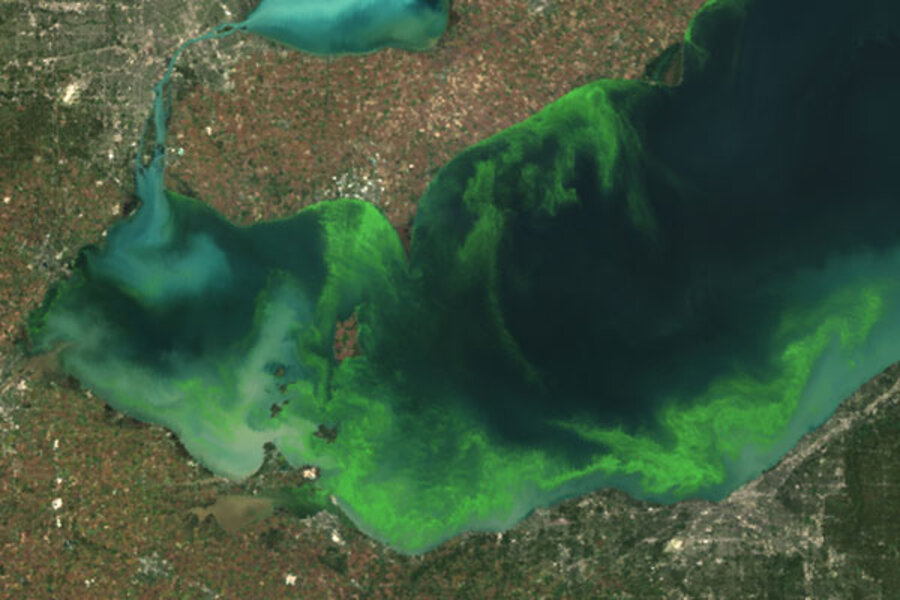Behind Ohio drinking-water ban, a Lake Erie mystery
Loading...
For the second consecutive day, residents in an area of northwestern Ohio that included the state's fourth-largest city, Toledo, are being told that their tap water is not safe for cooking or drinking. The governor has declared a state of emergency and deployed the National Guard to help get water and food to the region. As of Sunday morning, there were no reports of anyone being sickened by tap water.
Toxins in the water have been linked to an algae bloom in Lake Erie, which is a primary source of drinking water for many Ohio communities. In recent decades, Lake Erie has seen large blooms of blue-green algae develop in its western basin. In 2011, the algae covered a record 1,930 square miles of Lake Erie – nearly 20 percent of the entire surface of the lake.
The blooms grow from an excess of phosphorus, which is a key ingredient in many fertilizers. Lake Erie is particularly prone to the blooms because rivers carry runoff from farmland into the shallow western basin of the lake.
Some 63 percent of Lake Erie's watershed is used for agriculture, according to a February report by the International Joint Commission, which helps manage waters shared by the US and Canada. The report suggests that a 39 percent reduction of phosphorus in the Maumee River, which is Lake Erie's single greatest source of phosphorus and empties into the western basin, would have a significant impact on the blooms.
But phosphorous levels don't fully explain what scientists are seeing in Lake Erie. For example, phosphorous levels were higher in 2007 than in 2011, yet the 2011 bloom was larger. Scientists are investigating whether rising temperatures connected with climate change could be intensifying the blooms.
"It is the shallowest of the Great Lakes, the warmest and the most susceptible to ... the effects of climate change," states a 2013 report by the Lake Erie Ecosystem Priority, a task force of the International Joint Commission.
Climate change could also be bringing more intense spring rains, which would wash more agricultural runoff into Lake Erie, the report notes..
The water crisis in northwest Ohio comes as the US and Canada are making headway against pollution in Lake Erie. Layla Klamt of Liberty Voice reports:
Between 1972 and 1995, cleanup efforts for Lake Erie and all the Great Lakes saw excellent results. In 1969 the lake’s annual phosphorous load in metric tons was just under 30,000. By 1995, it was reduced by over three times. Additionally, the levels of mercury and other toxic chemicals that affect the edible fish in the lake reduced dramatically and have not increased since the 80s.
Larger algae blooms have actually been found in other Great Lakes, but their size, depth, and tides have meant that the algae could be dispersed more widely, Ms. Klamt writes.
The current situation marks the second time in two years that algae blooms have led to a drinking-water ban along Lake Erie. USA Today reports that a northwest Ohio township told its 2,000 residents not to drink the water last year. "That was believed to be the first time a city has banned residents from using the water because of toxins from algae in the lake," USA Today's Rick Jervis writes.






